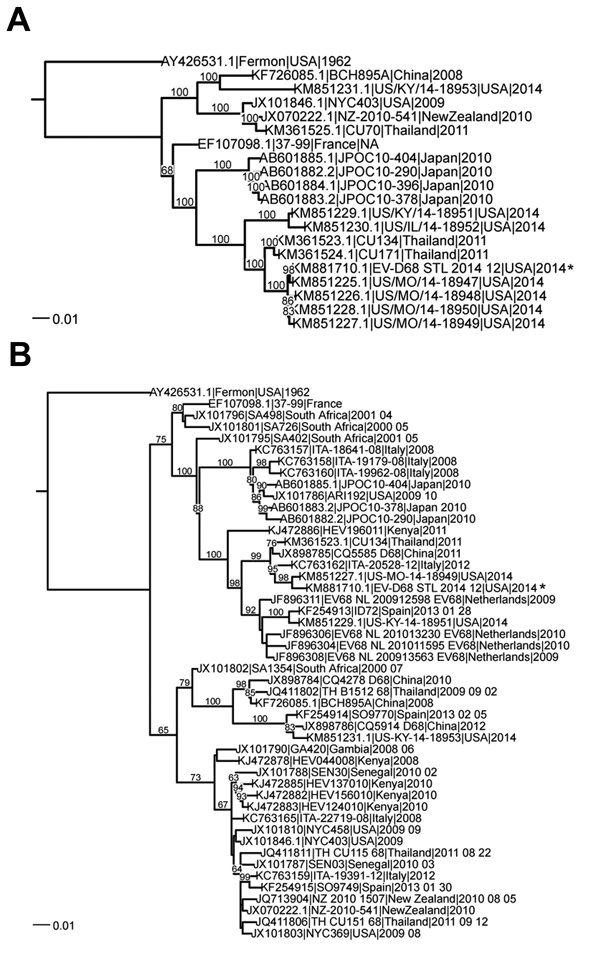Volume 21, Number 1—January 2015
Letter
Genome Sequence of Enterovirus D68 from St. Louis, Missouri, USA
Figure

Figure. Phylogenetic comparison of enterovirus D68 (EV-D68) obtained from St. Louis, Missouri, USA, in 2014, with other sequenced strains. The phylogenetic relationships of genome sequences (nucleotides) were estimated by using the maximum-likelihood method with RAxML (http://www.viprbrc.org) bootstrapped 100 times. A) Comparison of genome sequences for full-length and nearly full-length strains. B) Comparison of virus protein 1 sequences. Sequences were downloaded from ViPR (http://www.viprbrc.org) and supplemented with strains from the 2014 EV-D68 season. Sequences were clustered at 99% identity to obtain a representative set of sequences, which are shown. Bootstrap values are indicated on each tree. The strain from St. Louis is indicated by an asterisk on each tree. Scale bars indicate nucleotide substitutions per site.